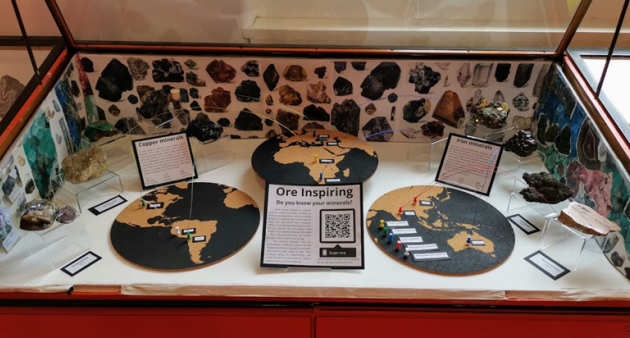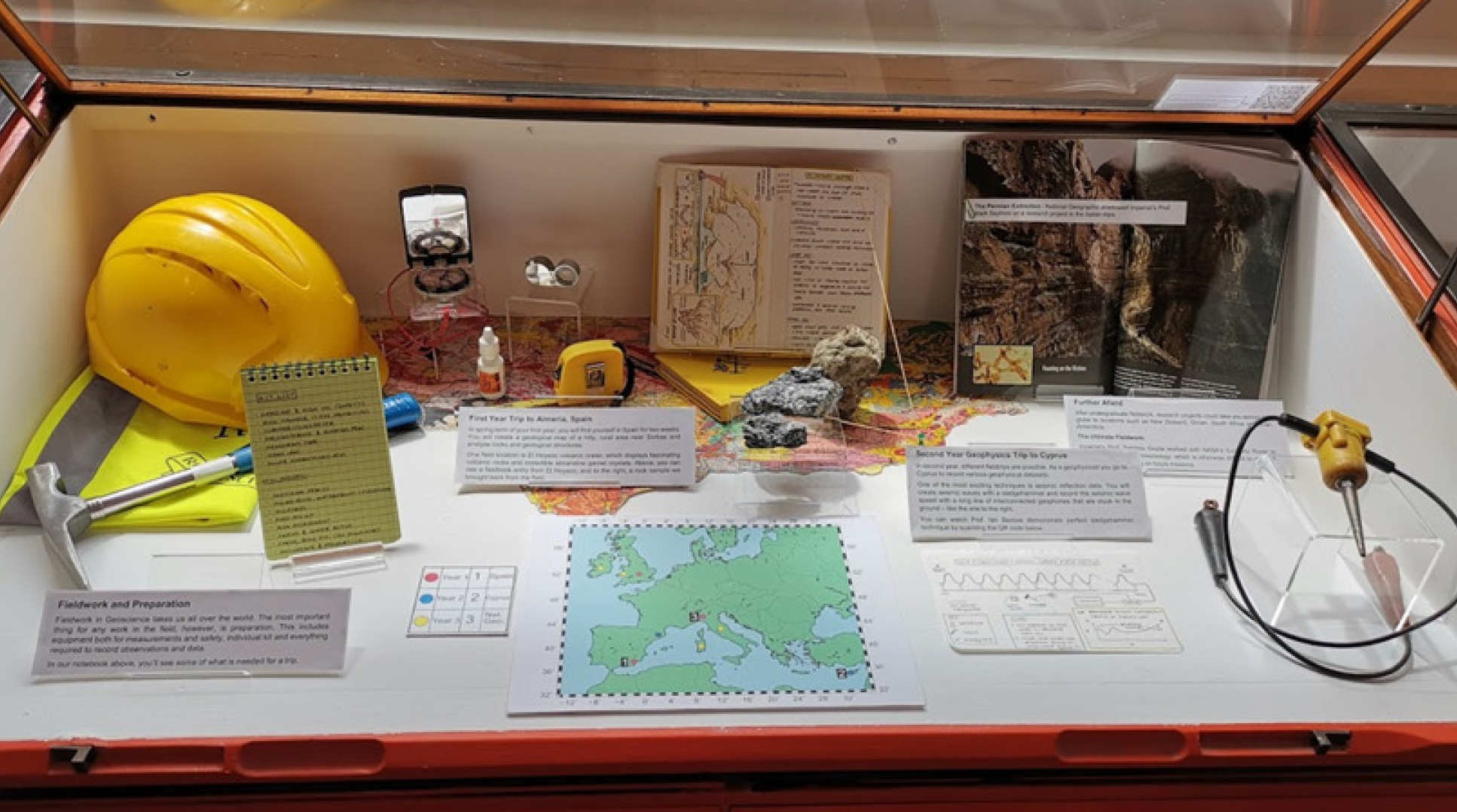In May 2019, Catherine Webb taught Science Communication for Earth Sciences and Engineering (known as ESE 355) to a group of 47 Earth Science and Geophysics undergraduates in their third or fourth years of study. The intensive two-week module, consisting of ten 3-hour sessions, gives a thorough grounding in both the practical and theoretical aspects of science communication.
An ongoing collaboration between Horizons and the Earth Science and Engineering Department, ESE 355 explores a variety of communication rationales and methods, with critical analysis of communication methods underpinned by practical activities. There is an innovative and interactive format, with group, paired and whole class discussions and tasks as well as more traditional chalk-and-talk from the lecturer. The classroom set-up reflects this with students on tables rather than a traditional lecture theatre arangement.
The 2019 module included a guided trip to the Natural History Museum to review the history of geology exhibitions from the geology gallery compared to those of the up-to-date Darwin Centre. Student assessment was based on a piece of journalistic writing and a group practical project, which students had to justify using their theoretical knowledge of the subject.
At the end of the fortnight the cohort confidently demonstrated that they understood the core theories within science communication and also had a reasonable understanding of the limitations of the cognitive deficit model. Students were able to apply these theories to their practical tasks and critically analyse other examples of science communication in various media. Levels of student engagement on the module were very high and there was some particularly commendable work, including a display on inclusivity and diversity in earth sciences, a field work display and display on mining.
